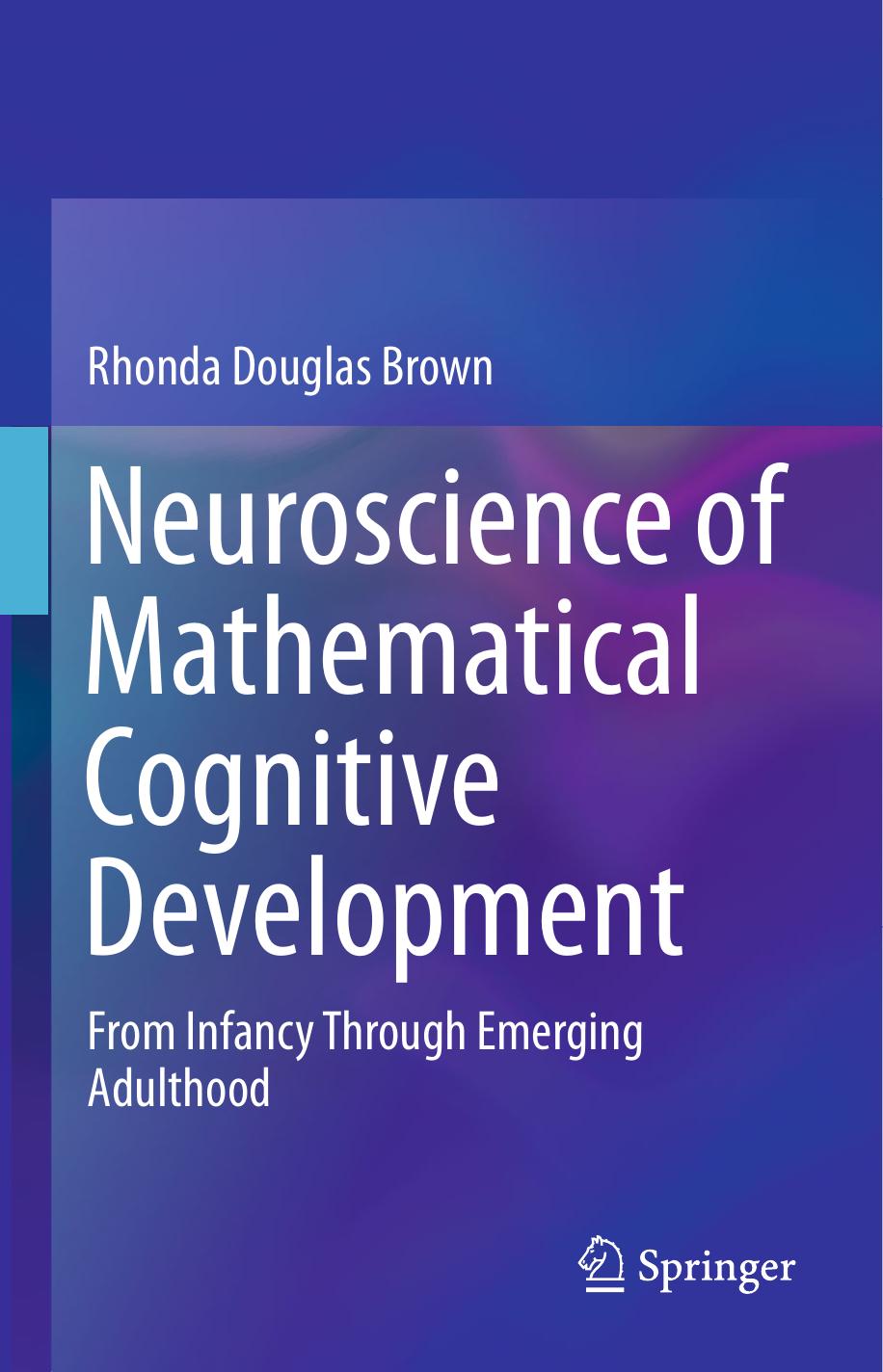Neuroscience of Mathematical Cognitive Development by Rhonda Douglas Brown

Author:Rhonda Douglas Brown
Language: eng
Format: epub, pdf
Publisher: Springer International Publishing, Cham
Approximate Calculation
Now, take a look at Fig. 4.9 and choose the closest answer to each problem.
Fig. 4.9Examples of problems used for three types of approximate calculation tasks: addition , subtraction , and multiplication
How did you choose your answers to these problems? Did you select your answers rather quickly, without performing any calculations? You may have recognized the large differences between the two choices, which may have made it easy to select your answer. For the addition problem on left side of Fig. 4.9, you may have recognized that the first addend is close to 1000, so the answer would have to be 1375, the choice on the right, because the choice on the left is below 1000. For the subtraction problem in the center panel, you may have estimated that 800 − 400 is closer to 400 than 45, and for the multiplication problem on the right side, you may have quickly recognized the appropriate number of zeros in the closest answer choice (i.e., 300 vs. 3000). Although these problems use different operations and may engage different types of strategies, they fundamentally assess approximate, rather than exact calculation .
While undergoing fMRI , adolescents (N = 16) were presented with these types of problems and had 5 s to select the side of the screen displaying the closest answer. The problems involved 3-digit addition and subtraction , and 1-, 2-, or 3-digit multiplication with two possible answers, a reasonable estimate and one that was off by approximately 1 order of magnitude. To control for visual activation and response selection, we compared brain activation during mathematical problems to brain activation during a color matching task that gave adolescents 2.5 s to choose which of the two identical 2- or 3-digit numbers matched the color of the same number shown in the middle of the screen.
As shown in Fig. 4.10, activation in bilateral IPS and the left lingual gyrus during approximate calculation positively correlated with mathematics achievement. Activation in these areas plus the right inferior occipital gyrus positively correlated with calculation subtest scores. Significant negative approximate calculation task performance by subtest interactions for activation in right IPS were also found for math fluency and calculation.
Fig. 4.10Regions with significant (p < 0.01 FWE corrected) positive correlations between functional activation during approximate calculation and Woodcock-Johnson III percentile scores for math achievement and calculation . Regions with significant (p < 0.01 FWE corrected) negative approximate calculation task performance by math fluency and calculation percentile score interactions for functional activation. Images in radiologic orientation. Slice locations: Z −25 mm to Z = +70 mm
Download
Neuroscience of Mathematical Cognitive Development by Rhonda Douglas Brown.pdf
This site does not store any files on its server. We only index and link to content provided by other sites. Please contact the content providers to delete copyright contents if any and email us, we'll remove relevant links or contents immediately.
When Breath Becomes Air by Paul Kalanithi(7253)
Why We Sleep: Unlocking the Power of Sleep and Dreams by Matthew Walker(5636)
Paper Towns by Green John(4163)
The Immortal Life of Henrietta Lacks by Rebecca Skloot(3820)
The Sports Rules Book by Human Kinetics(3581)
Dynamic Alignment Through Imagery by Eric Franklin(3481)
ACSM's Complete Guide to Fitness & Health by ACSM(3459)
Kaplan MCAT Organic Chemistry Review: Created for MCAT 2015 (Kaplan Test Prep) by Kaplan(3418)
Introduction to Kinesiology by Shirl J. Hoffman(3297)
Livewired by David Eagleman(3113)
The River of Consciousness by Oliver Sacks(2988)
Alchemy and Alchemists by C. J. S. Thompson(2908)
The Death of the Heart by Elizabeth Bowen(2895)
Descartes' Error by Antonio Damasio(2728)
Bad Pharma by Ben Goldacre(2722)
The Gene: An Intimate History by Siddhartha Mukherjee(2488)
Kaplan MCAT Behavioral Sciences Review: Created for MCAT 2015 (Kaplan Test Prep) by Kaplan(2483)
The Fate of Rome: Climate, Disease, and the End of an Empire (The Princeton History of the Ancient World) by Kyle Harper(2429)
The Emperor of All Maladies: A Biography of Cancer by Siddhartha Mukherjee(2427)
